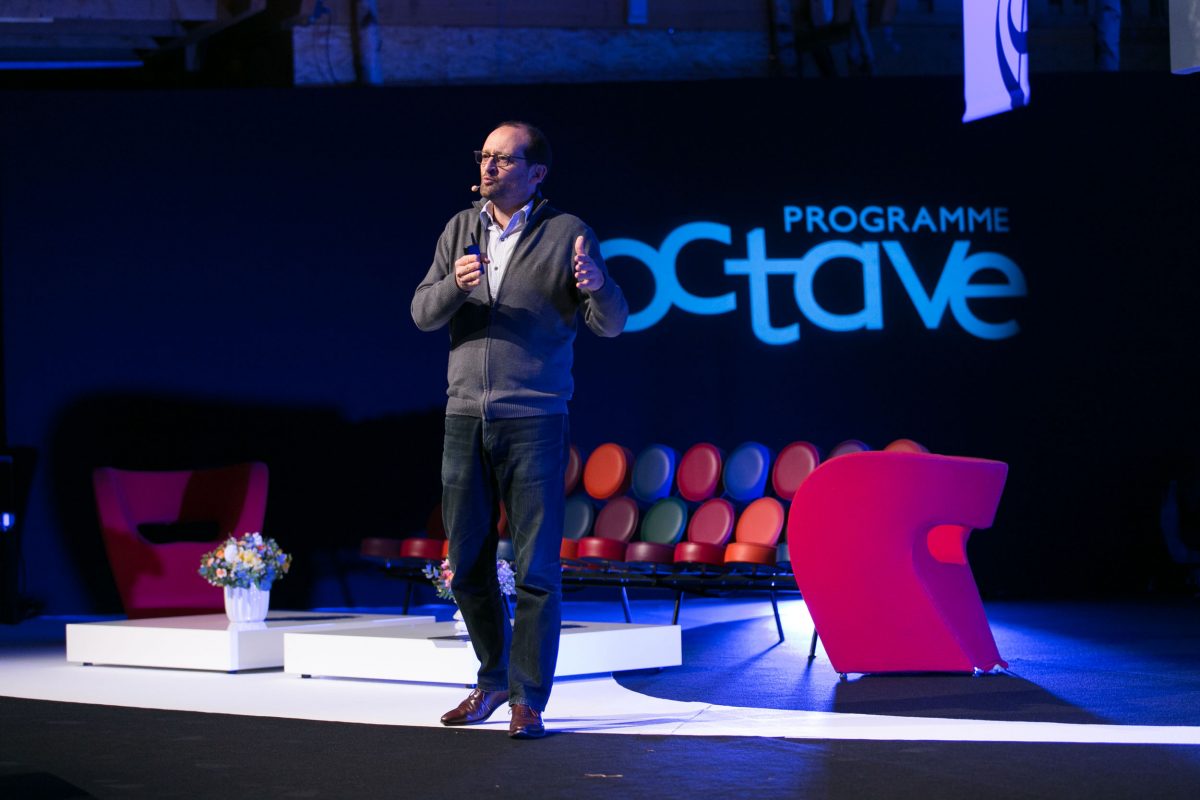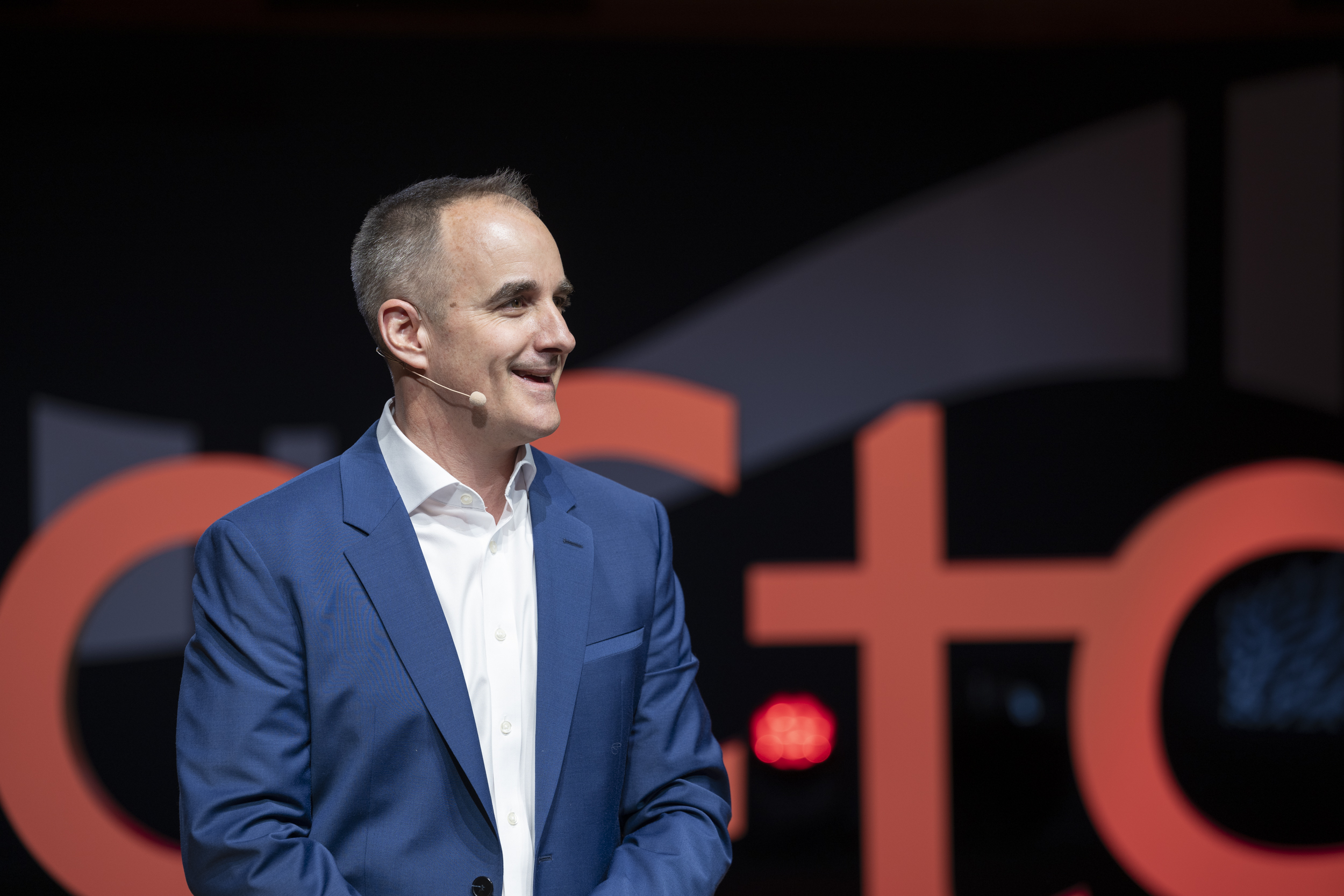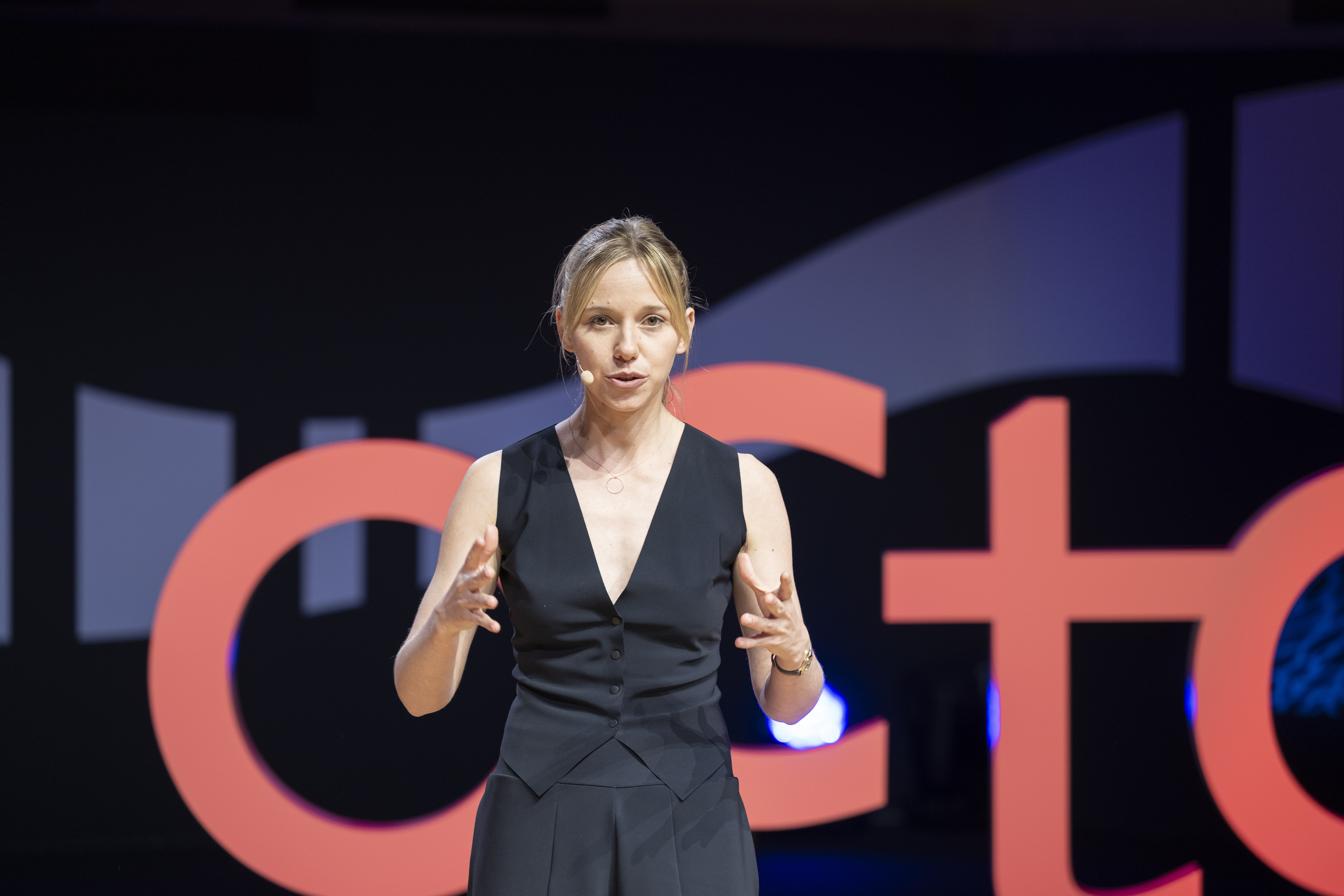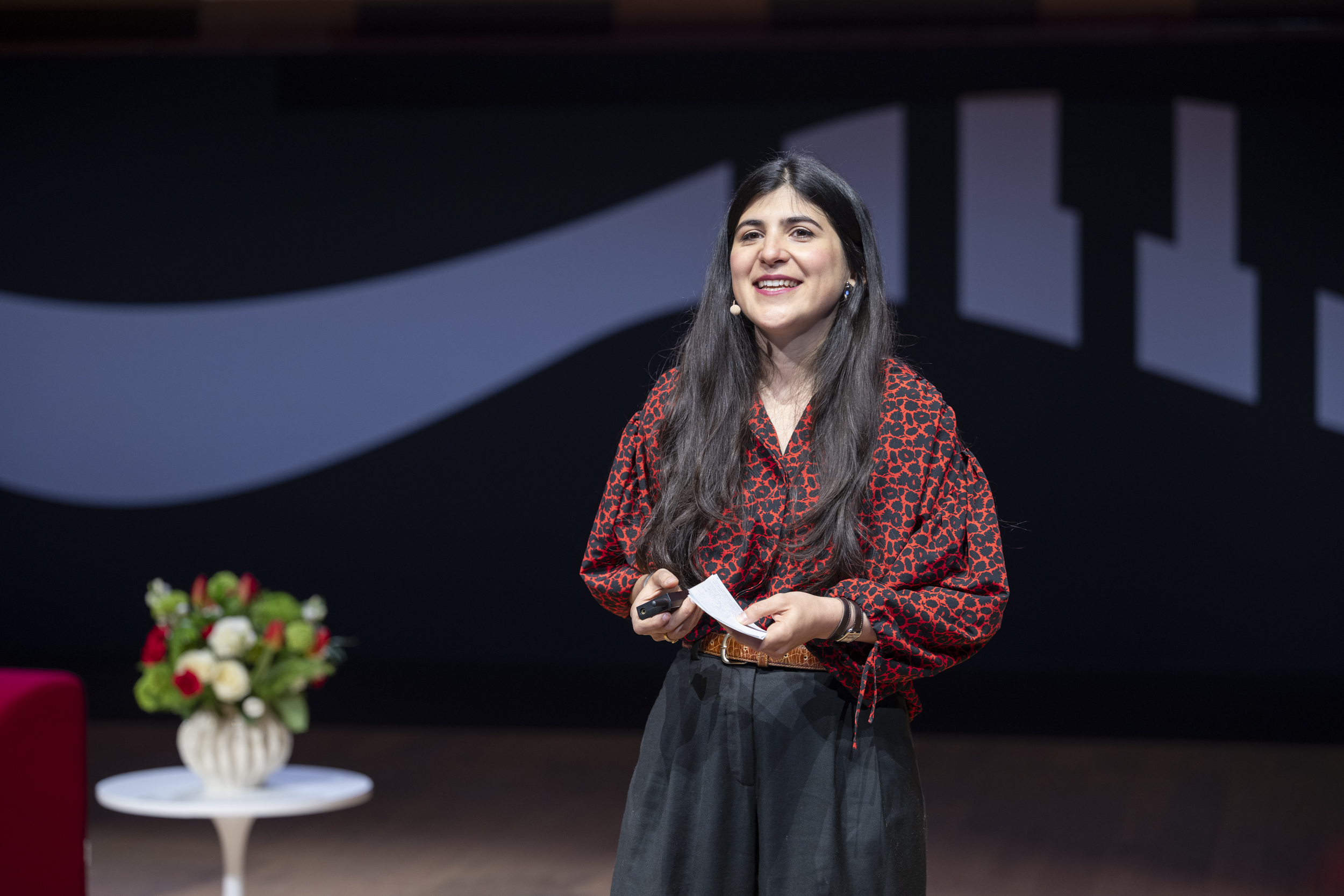.
What I learned from being a Chief Digital Officer
.
 Michael Aidan is Chief Marketing & Business Development Officer at DXO, a French startup pioneering in the field of photography. Just before that until July 2016, he was Chief Digital Officer of the Danone Group in charge of the digital transformation across all divisions, functions and regions. From 2009 to 2013, as Evian Global General Manager, he led the strategy and development of all platforms of Evian worldwide. He is – together with his agency BETC Euro RSCG and his team – the « father» of two of the most viewed ad campaigns on the web ever, Rollerbabies in 2009 and Baby & Me in 2013. He and his team turned around the brand and won 110 international awards in the field of advertising, innovation, media, design in the course of 4 years… Click here to read more.
Michael Aidan is Chief Marketing & Business Development Officer at DXO, a French startup pioneering in the field of photography. Just before that until July 2016, he was Chief Digital Officer of the Danone Group in charge of the digital transformation across all divisions, functions and regions. From 2009 to 2013, as Evian Global General Manager, he led the strategy and development of all platforms of Evian worldwide. He is – together with his agency BETC Euro RSCG and his team – the « father» of two of the most viewed ad campaigns on the web ever, Rollerbabies in 2009 and Baby & Me in 2013. He and his team turned around the brand and won 110 international awards in the field of advertising, innovation, media, design in the course of 4 years… Click here to read more.
“What I will learn through the journey
is that changing the behavior of mature professionals
that have been born and raised a certain way
is by far the biggest resistance you can experience.”
I can brag that I have had the “IT job” for four years of my life. When I say “IT”, I don’t mean “I.T.” as in Information Technologies (even though confusion does exist on this topic). No, I mean “it” like “this is it”, the “talk of the town”, the job that has the mission to change a whole company without being in charge of anything in particular…a mission that is scary, exhilarating, narrow and wide, fast and slow, empty and filled, structured and all over the place. I think I learned a lot because there is something to be learned about trying to modify the trajectory of a very big boat without ever holding the rudder. There is also a lot to be learned from trying to put something high on a company’s agenda when it’s not officially amongst its top priority.
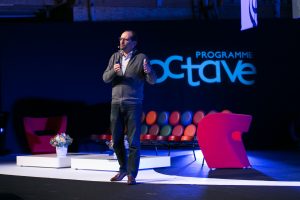 There isn’t one speech I have given on the topic of digital transformation that didn’t start with the fact that my 10 year-old son’s first reaction to the announcement that his dad was going to be working in digital was a burst of laughter followed by this terrible question “daddy, are they aware?”. “Aware of the fact that you and your computer are not friends”. Similarly for the few young team members I wanted to embark on the journey, “why you in this position and not me? I know digital better than you do”. I have to admit that beyond the offense that I may have felt faced with these questions, they have probably given me the best insight behind the very concept of digital transformation. If “digital transformation” was purely about technology, I was indeed the wrong casting. But if the most important word of the two turned out to be latter, then I could have a reason to be in this position. What I will learn through the journey is that changing the behavior of mature professionals that have been born and raised a certain way is by far the biggest resistance you can experience. Transformation is what it is about.
There isn’t one speech I have given on the topic of digital transformation that didn’t start with the fact that my 10 year-old son’s first reaction to the announcement that his dad was going to be working in digital was a burst of laughter followed by this terrible question “daddy, are they aware?”. “Aware of the fact that you and your computer are not friends”. Similarly for the few young team members I wanted to embark on the journey, “why you in this position and not me? I know digital better than you do”. I have to admit that beyond the offense that I may have felt faced with these questions, they have probably given me the best insight behind the very concept of digital transformation. If “digital transformation” was purely about technology, I was indeed the wrong casting. But if the most important word of the two turned out to be latter, then I could have a reason to be in this position. What I will learn through the journey is that changing the behavior of mature professionals that have been born and raised a certain way is by far the biggest resistance you can experience. Transformation is what it is about.
The two very structuring first questions any CDO has to solve are what digital covers and where to start. Each executive I met had a different take on the topic: it’s about E commerce, about collaboration, about social networks, about data, about e listening, about dialogue with communities, about… videoconferences that are not working. I gathered people from all divisions and functions to define the scope. We opted first for what seemed to be the most urgent and conveniently enough what I knew best: marketing and sales. How to impact the way you do marketing in a digital age? We gathered the best internal and external experts and created a training course, powered by a user-friendly app, that we ran and improved across 10 geographies and 1.000 people. A training that in true digital fashion became internally viral and spread horizontally.
After this first step, things changed. CDOs are by nature more likely to be impacted by Management changes than standard established functions. Danone was no exception. Our new CEO talked us into looking at a broader picture than just marketing and sales which we labelled “making Danone digitally fluent”, enabling the company to operate on and offline, just “like what people do”. How could digital transform the functions – finance, HR, supply chain, operations – and how could it transform the way 100,000 people collaborate. Two topics I had very little clue about at first.
“The biggest complementarity between IT and digital is elsewhere :
one used to be platform centric (“we choose the tech and you figure out how to use it”)
and the latter has brought the notion of user centricity”
On the first topic it felt obvious that only the functions themselves could lead their transformation, and that the only possible central role was going to be a steering one. On the second topic, getting all employees to better collaborate, we thought of the huge paradigm change we had all experienced over the past 20 years: your first computer, mobile phone, internet connection were given to you by your company. Companies were ahead of individuals. And today employees are the ones to go and see their IT Dept with requests to adopt apps or devices they have at home. How can companies catch up? Through a new operating mode: matching people’s digital behaviors rather than trying to get them to learn new ones. Which translates into implementing the tools and platforms people use outside, making them fit the company’s ecosystem rather than reinventing in house tools and platforms that would mimic the likes of Facebook or Google. Based on this logic, and fostered by teamwork between digital, HR and IT, Danone became the first global FMCG to experiment then sign with Facebook at Workplace. A true transversal game changer.
 This topic leads to the classic question of whether there should be a link between digital and IT. Historically IT has always managed big operating systems and little by little started to help every business entity with their “lighter digital needs”. The problem is that if each business entity or function got digitally equipped in an isolated way, not only would there be no economies of scale but also the company would completely miss on one of the biggest opportunity of digital: its transversal dimension which translates into better consumer understanding and employee communication. Hence the need for digital to foster an harmonization of the “lighter tech needs”. But the biggest complementarity between IT and digital is elsewhere : one used to be platform centric (“we choose the tech and you figure out how to use it”) and the latter has brought the notion of user centricity.
This topic leads to the classic question of whether there should be a link between digital and IT. Historically IT has always managed big operating systems and little by little started to help every business entity with their “lighter digital needs”. The problem is that if each business entity or function got digitally equipped in an isolated way, not only would there be no economies of scale but also the company would completely miss on one of the biggest opportunity of digital: its transversal dimension which translates into better consumer understanding and employee communication. Hence the need for digital to foster an harmonization of the “lighter tech needs”. But the biggest complementarity between IT and digital is elsewhere : one used to be platform centric (“we choose the tech and you figure out how to use it”) and the latter has brought the notion of user centricity.
Clearly, there is a need for digital and IT to work hand in hand. Surprising, isn’t it ?
Now, how do you create a transformation momentum? Through big seminars that act as catalysts. But it’s not enough. While they can inspire change, the issue is always the conversion into action on the following Monday. How to go from Push to Pull? If you are alone – even with an enthusiastic team – trying to push for something that is not a priority for operational teams, you are doomed. But the minute they are the ones to ask and you are just supporting their priorities as they see fit, things can go very fast. That is when we figured out that a simple self-assessment tool could become our best ally: local teams were measuring themselves on a scale created by us, then defining where they needed help and asking us for it. All that was left to be done was diffusing knowledge. Provided we had some.
I left my job not because I was done or bored. It is a never-ending task. I left after a mentor opened my eyes on what the role of a CDO was. I remember his very words. He said “CDO is the job of two people; one has to paint a vision, show the direction, provide a few roadmaps and tools, and generate energy towards change. The other one has to make sure that every corner has been digitalized and that all platforms have been optimized”. When I asked him why it had to be two people vs just one, he replied “because you never find these two sets of skills in the same person”. 3 days later, these words of wisdom turned into a “eureka”: I could only be the first person because that’s what I knew how to do and never the second one. Hence the need to finish embarking people on the journey as best I could, then find myself another challenge. Any CDO or any “transformer” has to figure out whether he is the starter or the finisher. And whether it is the profile that is needed at that point in time. I believe I left when it was time for another type of CDO to take over.
Today, I am in a startup with both hands on the steering wheel. And I love it. But the CDO experience has taught me lessons that will stay with me forever: how to gather people from different horizons to frame a future, how to embark teams regardless of reporting lines, how to embrace change. It was about digital this time but transformations are needed on many fronts. And the way to approach them will probably follow the same logic.
So, what are the key challenges of a chief digital officer? There aren’t so many after all: painting an engaging vision of something that doesn’t exist, defining your own role and field of play, getting the others to buy into it, accepting the fact that there will be a lot of resistance, that Management changes are always a possibility and trying to embark teams that have other things to do. Oh, and I almost forgot: figuring out what you will do next. Because that isn’t mapped out either.
.
Share this Post



